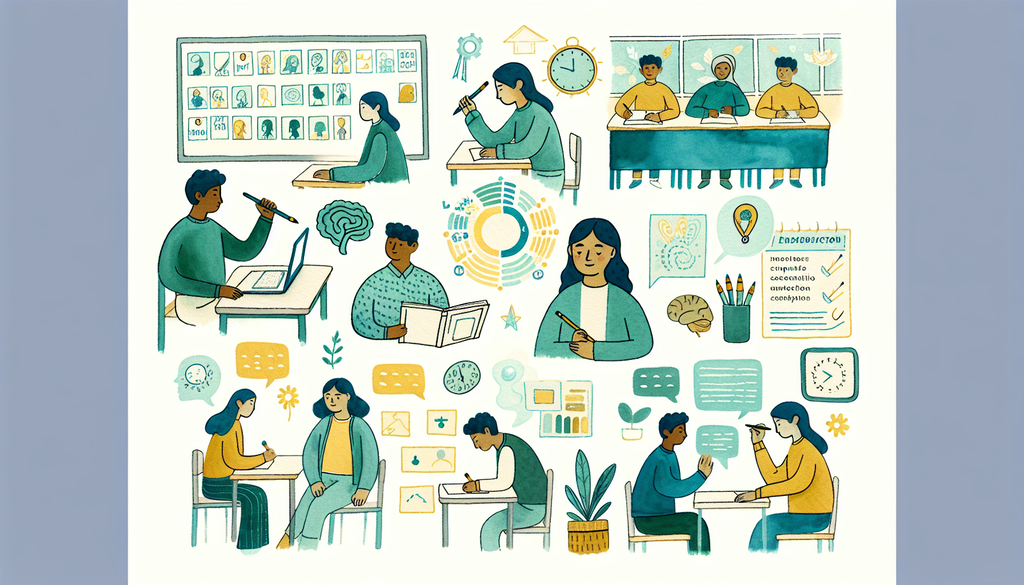The Role of Cognitive Behavioral Therapy in Managing Classroom Behavior

As parents and caregivers in the realm of inclusive and specialized learning, one of your greatest challenges is managing classroom behaviors, particularly for children identified as gifted or having special needs. Cognitive Behavioral Therapy (CBT) can be a valuable tool in developing effective strategies to handle these challenges. Over the years, researchers and psychologists have found CBT to be extremely successful in treating a variety of disorders, including anxiety and depression. But what is the role of CBT in the context of a classroom setting?
Understanding Cognitive Behavioral Therapy
Cognitive Behavioral Therapy (CBT) is a type of psychotherapy that helps individuals understand their thoughts and feelings and how they influence behaviors. It’s based on the idea that negative actions or feelings are not caused by situations themselves, but by our own interpretation of those situations. In more simple terms, it’s not the situation that makes us feel bad, but the way we think about it.
CBT is often used to treat mental health disorders, though its applications extend far beyond this sphere, including managing classroom behaviors. Techniques used in CBT can help establish a learning environment conducive not just to academic growth, but also to the holistic development of students with diverse needs.
How CBT Techniques Can Be Applied in the Classroom
With the right strategies, CBT can support students in overcoming behavioral challenges, thereby boosting their self-confidence, productivity, and academic performance. Here are some ways teachers and parents can apply CBT in a home or school setting:
Thought Records: A popular CBT tool, thought records help students realize how certain negative thoughts contribute to feelings of depression, anxiety, or distress. Suppose a student consistently feels they’re untalented and can’t meet a classroom challenge. In that case, a thought record can help them identify alternative ways of interpreting that situation.
Modeling: Teachers can use CBT techniques by modeling them. For example, teachers can openly handle challenges or stressful situations by maintaining positivity and adaptability to show students how to manage their emotional response in similar situations.
Group Therapy: Small group sessions where students can discuss struggles and offer mutual solutions can help build a sense of belonging. These sessions may lead to shared insights and collective problem-solving learning experiences.
Regular Feedback: One of the principles of CBT is continuous evaluation and feedback. Regular feedback allows students to realize their abilities, address shortcomings, and work on improving their strengths.
To further understand and support your child’s emotional and academic needs effectively, you might find our post on Understanding Twice-Exceptionality: A Parent’s Guide useful. It explores what it means to be both gifted and face learning challenges.
The Benefits of Applying CBT in the Classroom
When correctly employed, CBT strategies can lead to numerous improvements in the classroom environment and student outcomes:
Reducing Behavior Problems: CBT has the potential to reduce behavioral challenges by helping students understand and manage their feelings and responses.
Increasing Academic Performance: As behavioral issues decrease, academic performance and concentration can significantly improve.
Improving Social Skills: CBT techniques can also foster better social interaction, as students learn to navigate social situations and understand others’ perspectives.
Boosting Self-Esteem: With constructive feedback and perspective-shifting tasks, students can boost their confidence, positively impacting their academics and relationships.
In conclusion, the applications of Cognitive Behavioral Therapy in a classroom span across several dimensions, from reducing behavioral issues to improving general learning outcomes. Our understanding of special and gifted education continues to evolve. The Building Resilience in Children with Special Needs post can further help parents and educators navigate these realms by providing strategies to help children cope with challenges.
Remember the importance of patience, understanding, and consistent effort in this journey. Engaging with communities for families of children with special needs, as discussed in Seeking Support: Finding the Right Community for Special Needs Families, can offer additional assistance and resources.